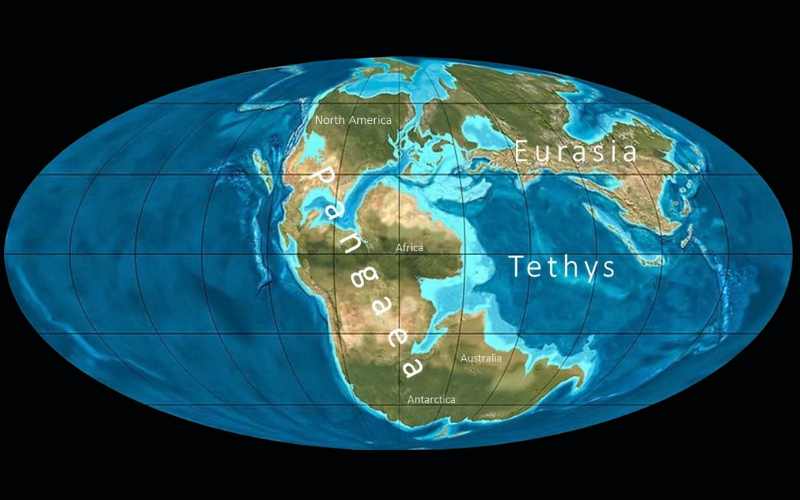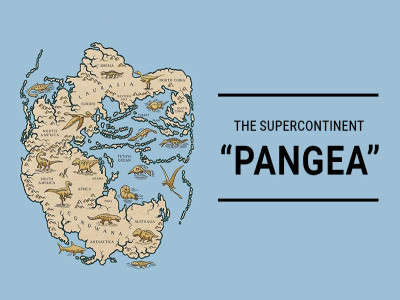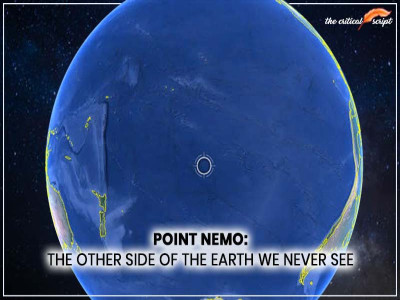
Tethys Sea: A Journey Through Time and Geography
The Tethys Sea, an ancient ocean that once sprawled across the globe, has left an indelible mark on Earth’s geological and geographical history. This vast sea, which existed during the Mesozoic and Cenozoic eras, played a pivotal role in shaping the continents, oceans, and mountain ranges we see today. Let's delve into the fascinating story of the Tethys Sea and its enduring legacy.
The Tethys Sea began forming approximately 250 million years ago during the Mesozoic era, following the breakup of the supercontinent Pangaea. As the Earth's tectonic plates shifted and separated, a new ocean basin emerged between the ancient continents of Gondwana to the south and Laurasia to the north. This ocean basin would eventually become the Tethys Sea, named after the Greek goddess of the sea, Tethys.
The movement of tectonic plates continued to reshape the Tethys Sea over millions of years. Around 50 million years ago when the Indian Plate, moving at a relatively high speed of about 15 cm/year, began its northward movement towards the Eurasian Plate. As the Indian Plate converged with the Eurasian Plate, it began to subduct beneath the Eurasian Plate. The subduction of the Indian Plate led to the closure of the Tethys Sea giving rise to the Alpine-Himalayan mountain belts.
This intense tectonic activity resulted in the uplift of the Himalayas, making them one of the youngest and tallest mountain ranges on Earth. The sediments and marine deposits from the Tethys Sea were folded, uplifted, and thrust upwards during this collision, contributing to the geological composition of the Himalayan range. The Himalayas stand as a living testament to the ancient Tethys Sea, with remnants of this ancient ocean buried deep beneath their towering peaks.
While the Tethys Sea itself no longer exists, its remnants can also be found in several modern-day seas and oceans.
Mediterranean Sea: Perhaps the most prominent remnant, the Mediterranean Sea is often considered the successor to the Tethys Sea. Bordered by Europe, Africa, and Asia, the Mediterranean preserves some of the geological characteristics of its ancient predecessor.
Black Sea: Connected to the Mediterranean Sea through the Bosporus, the Black Sea is another basin that was once part of the Tethys Sea. Though smaller in size, it carries a piece of the Tethys legacy.
The Persian Gulf and the Red Sea: These smaller bodies of water also trace their origins back to the Tethys Sea, representing the southern extent of this ancient ocean.
The closure of the Tethys Sea had profound geological consequences. The intense tectonic activity associated with the sea's closure led to the formation of numerous mountain ranges, including the Himalayas, Alps, and Zagros Mountains. These mountains, among the tallest and most majestic on Earth, stand as testaments to the power of plate tectonics and the legacy of the Tethys Sea.
The Tethys Sea, though long gone, continues to captivate the imaginations of geologists, historians, and curious minds alike. Its story is a testament to the dynamic nature of our planet and the ever-changing interplay of geological forces. While we may no longer sail its waters or gaze upon its shores, the Tethys Sea lives on in the mountains, seas, and oceans that bear its legacy, reminding us of Earth's ancient past and the forces that continue to shape our world today.
Disclaimer: The opinions expressed in this article are those of the author's. They do not purport to reflect the opinions or views of The Critical Script or its editor.

Newsletter!!!
Subscribe to our weekly Newsletter and stay tuned.















Related Comments